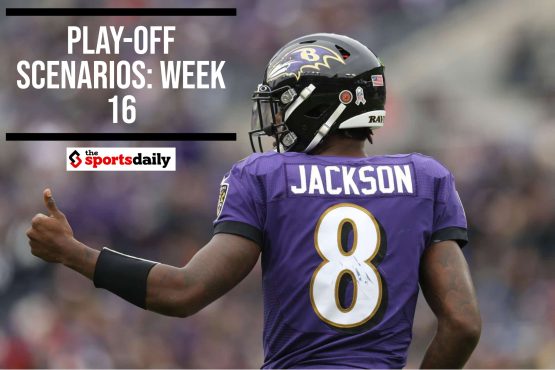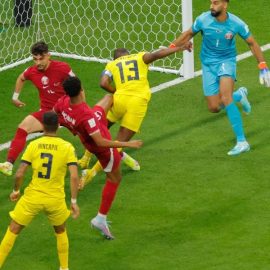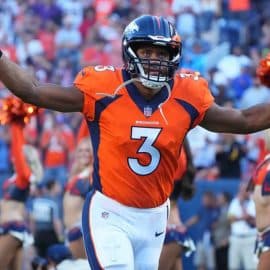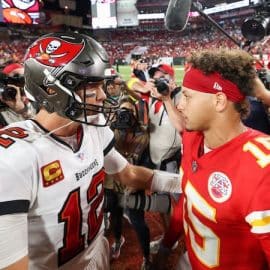This past weekend saw two games go 19 innings. Such marathon games are fairly rare, so having two in two days is quite a treat. Marathons (for these purposes, games more than 14 innings, or those reaching a second 7th inning stretch) are also some of the most challenging games to manage and it’s always really interesting to see how different managers respond.
It is impossible to predict when a marathon game will take place and how long it will last. That’s the beauty. Traditional (or maybe newfangled, depending on your generation/philosophical outlook) bullpen management tenants–like saving certain pitchers for later innings or match ups–get thrown out the window. In an extra inning game, the only inning that matters is the one you’re in. Managers must simultaneously do whatever they can to prevent the other team from scoring, while also trying to make sure there are arms left for potential later innings, which could be just as important.
How a bullpen is managed in extra innings is often dependent on the starter’s performance hours before. If the game is a low scoring affair, hopefully the starter managed to get deep into the game. If not, the bullpen may have been taxed long before the 9th inning even ended. There’s nothing more frustrating than not being able to use an effective reliever in the 18th because he got one out in the 8th. Again, though, that situation is totally unavoidable.
One of the best parts of long games is that we get to see “situational” guys get stretched out to an inning or more. We get to see match ups in the 17th that we would never even dream of in the 7th.
Another great part of marathons is that we find out what happens when the bullpen runs out of arms. At a certain point, the one or two inning guys are simply all gone and the manager is faced with a decision. The most logical thing to do in a long game is to use every bullpen pitcher for as long as possible and then go to the rotation guys. This is risky because as soon as a starter begins to warm up, you’ve potentially thrown a wrench in the plan for the whole next slate of games. Most managers are understandably hesitant to risk multiple future games for the sake of one. Rationally, in the course of a 162 game season, it’s hard to justify–but in the heat of the moment, competitive pro athletes and coaches want to win.
Starters are also a finicky bunch. They have routines and procedures, and coming out of the bullpen on short notice can upset their rhythms. So, while your starters are generally your best five pitchers, their is no guarantee that they’ll be effective when put on the spot late in games.
Let’s take a look at three recent marathon games and see what we can glean from the bullpen usage in each.
On Sunday,the Toronto Blue Jays walked off on the Detroit Tigers in the 19th inning, 6-5. There were some particularly catchy bullpen wrinkles when it comes to this one. The previous day, Detroit’s struggling closer Joe Nathan was hit hard and blew the save. He was considered unavailable for the game and Joba Chamberlain was given the save chance in the 9th. Of course, Joba blew the save and the game headed to extras with manager Brad Ausmus still trying to avoid putting Nathan in.
In spite of all the bullpen problems Ausmus was dealing with, Blue Jays manager John Gibbons was in a much worse spot. His starter, Mark Buehrle, had only managed 3.1 innings, so Gibbons had dipped into his bullpen in the 4th and was ill-suited for 15 additional frames.
Despite the short start, the Jays were able to get through 9 innings using only 3 pitchers. That’s actually better than the Tigers, who needed 4 arms despite getting 6 innings out of David Price.
Gibbons got lucky though. Later, he used relievers for 1.1 innings, 1.1 innings, .1 innings, and 1 inning in the extras as he needed to constantly maneuver to work out of trouble before turning the ball over to relief pitcher Chad Jenkins. If Jenkins had struggled, Gibbons might have been in an even tougher spot. Instead, Jenkins–who has pitched out of the ‘pen the entire season and rarely more than 15 or 20 pitches–threw 6 innings of shutout baseball, allowing 7 hits and only 1 walk over 75 pitches. Jenkins’ stellar outing bailed his team out and put them in a position where their starting rotation was untouched by the marathon, and only 2 or 3 relievers threw enough to preclude them from pitching the next day.
It didn’t work out so well for Detroit. The Tigers split the first 6 extras between 2 pitchers before they were forced to go to Nathan as the last man out of the ‘pen. Nathan was fine, but given his previous workload, could only go 1 inning so Ausmus was forced to go to a starter. The next day’s scheduled pitcher was Justin Verlander but rather than go to him, Ausmus chose Rick Porcello, who was only 2 days removed from a 7 inning, 110 pitch game in New York. It was a really interesting decision by Ausmus. More than likely, it was Porcello’s mid-week throw day and since the game started in the afternoon, he’d probably not thrown his bullpen session yet. Ausmus took advantage of that opportunity and used Rick as a reliever, presumably knowing that he could only use the pitcher for a couple of innings but he could do so without messing up the next game and the rest of the rotation. It was an extremely smart move, despite the fact that Porcello surrendered the game winning run in his second inning.
The previous day, the Angels walked off on the Boston Red Sox after 19 rounds, in a game that saw both teams go to starters out of the ‘pen.
The Sox were fortunate enough to get 8 innings out of their starter, Clay Buchholz, and used only 1 additional pitcher to get through 9. The Halos got 6.1 out of Garret Richards and needed a total of 4 pitchers to finish 9 innings.
The Sox elected to effectively go 1 inning a piece from the 8th through the 14th, burning their closer Koji Uehara in the process. The decision to use Uehara in a tie game in the 12th came back to bite Boston 2 innings later when they got a lead but blew the save and allowed the game to continue. Boston’s saving grace was the season debut of Heath Hembree. The newly acquired Hembree went 4 shutout innings from the 15th to the 18th and made up for the lack of longevity from any of Boston’s other relievers.
On the other side, LA used a similar approach, but 3 of their pitchers went 2 innings instead of just 1. Mike Scoscia followed convention when he decided to use his closer Huston Street in the 9th inning of a tie game, since as the home team, he knew there would be no save situation in extras. After getting through the next 6 innings with 3 pitchers, and the 7th extra frame with Jason Grilli, another short relief guy, the Angels went to starter Matt Shoemaker.
Just like Porcello, Shoemaker was 2 days from a 100-plus pitch start. It must have been his throw day as well, though the night start time makes it less likely that he hadn’t already tossed his ‘pen session. It is interesting that Scoscia decided to go with Shoemaker on short rest rather than Vinnie Pastano, a reliever who was still available. I imagine that Pestano or Sunday’s scheduled starter Hector Santiago were going to be the next guys up. 3 innings and 41 pitches were a lot for Shoemaker on such short rest.
Sox manager John Farrell started the bottom of the 19th with Brandon Workman, a starter who was on only 1 day’s rest after a 96 pitch start. You have to wonder if someone else might have been a better option, especially as Workman surrendered a walkoff homer to the first batter he faced.
The last game we’ll look at was the longest game of 2013. On June 8, the Marlins and Mets played 20 innings in Queens. The hero of the game was Kevin Slowey of the Marlins. He was a starter working on full rest and tossed 7 shutout relief innings earning the win. Perhaps because Slowey was on full rest, manager Mike Redmond went to him before he emptied his stock of relievers and normal closer Steve Cishek got his 6th save of the season in the 20th.
For the Mets, Shaun Marcum was the tough luck loser. He threw 8 great innings of relief but fell to 0-7 with the loss. Marcum was a starter, but hadn’t pitched in more than a week and had been struggling (evidenced by his 0-6 record). Thus, the Mets got lucky by having a pitcher with starter stamina and more than a full compliment of rest handy at the back of their bullpen.
What these three games show is that there is no real formula for marathon game bullpen management. Each game and each team is unique.
Brandon Workman has spent a lot of time working out of the bullpen. Perhaps that’s why Farrell went to him over other, more rested starters. The Tigers and Blue Jays were playing a day game so Rick Porcello might not have had time to get his bullpen session in before the game and was thus available in the 18th. Perhaps if the game had started later in the day, Brad Ausmus might have had a different approach. Individual circumstances play a key role in managerial decisions.
If it were me, I think I’d be a lot quicker to go to my next starter in line. In today’s game, with chartered jets and fast travel, I think I’d count on my front office to find me a starter for the next game from the minors to avoid having to mess with the rest of my rotation. If you’re going to play 19 innings, you might as well play to win and I think my most rested starter would give me the best chance.
-Max Frankel
Stat of the Day: In 1981 the Pawtucket Red Sox and Rochester Red Wings played the longest game in professional baseball history: 33 innings. The PawSox won 3-2.
Add The Sports Daily to your Google News Feed!







